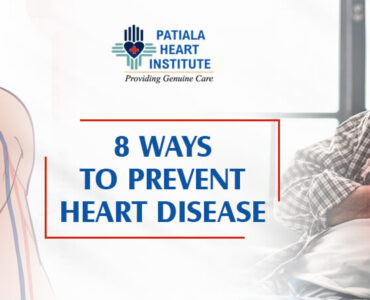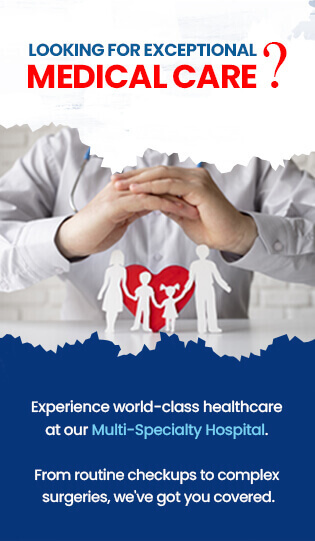Studies indicate that India’s population had just crossed the one billion mark when we entered the new millennium, and 42,000 open-heart operations were performed. India has a high mortality and morbidity rate associated with cardiovascular diseases.
Cardiac surgery or heart surgery refers to any procedure performed on the heart or veins carrying blood to and from the heart to treat various cardiovascular diseases. Not every heart condition requires heart surgery. Sometimes, heart conditions can be treated with medicine, lifestyle changes, or non-surgical cardiac procedures.
Heart conditions such as heart failure, irregular heart rhythms, complete heart block, malfunctioning heart valves, damaged blood arteries, and plaque buildup that blocks the blood flow completely or partially may require heart surgery.
What Conditions are Treated with Heart Surgery?
A cardiologist may suggest heart surgery to treat various problems related to the heart and connected blood vessels.
Arrhythmias
Arrhythmia is a health condition in which the heart beats abnormally. Arrhythmia is of three types – Tachycardia, Bradycardia, and Atrial fibrillation. Tachycardia is when the heart beats very fast, usually above 100 beats per minute. Bradycardia is a heart condition where the heart rate drops below 50 beats per minute. Atrial fibrillation refers to irregular heart rhythms. Arrhythmias can weaken the heart and can lead to chronic problems.
Aneurysms
An aneurysm is an abnormal bulge in the artery’s wall. Aortic aneurysms occur in the aorta, the large artery that carries blood from the heart to other body parts. An aortic aneurysm can form in the abdomen (abdominal aortic aneurysm) or chest (thoracic aortic aneurysm). Aneurysms can also develop in the heart muscle. Aneurysms can be life-threatening if they burst or tear.
Congenital Heart Disease
It is common for babies, children, and adults to suffer from congenital heart disease. Various congenital heart defects can be treated with heart surgery, Ventricular and atrial septal defects (ASD and VSD), Aortic coarctation, Dextro-transposition of the great arteries, and Patent Ductus Arteriosus (PDA).
Repairing congenital heart defects is necessary soon after birth in some cases. In some cases, the symptoms of a defect may not show up immediately. It is also possible for adults who don’t even know they have congenital heart disease to develop it.
Coronary Artery Disease
Coronary artery disease is a heart condition in which coronary arteries become narrow due to plaque buildup. The three coronary arteries provide oxygen-rich blood to the heart. Plaque buildup in the arteries can block the blood flow to the heart. The heart doesn’t get sufficient oxygen and nutrients when the blood flow is restricted. The condition is called myocardial ischemia. Coronary artery disease is the most common cardiovascular disease and can lead to a heart attack.
Heart Failure
Heart failure is the heart’s inability to pump blood to the body as it should. People with heart failure may also have other heart problems like artery disease, heart block, and high blood pressure. Treatment for heart failure will include medication and lifestyle changes, but heart surgery may be recommended if the condition worsens.
Heart Valve Disease
Heart valve disease is a problem with any of the heart valves (aortic, pulmonary, tricuspid, and mitral) that keep the blood flowing in one direction. The most common and dangerous problem is the aortic valve, causing 60% of deaths due to heart valve disease. Medicines can help treat heart valve diseases, but sometimes surgery may be required to repair or replace the valve.
Types of Heart Surgery
Coronary Artery Bypass Grafting
CABG is the most common life-saving heart surgery performed to treat coronary artery disease. Heart surgeons perform CABG to restore blood flow using a healthy blood vessel taken from another part of the body. The heart bypass surgery can be a double bypass, triple bypass, or quadruple bypass, depending on the number of coronary arteries that need to be bypassed.
Aneurysm Repair Surgery
The surgery is done to treat aortic aneurysms. A heart surgeon will remove the damaged aorta and replace it with a graft, an artificial artery made of synthetic fibre. Left ventricular reconstructive surgery is performed to treat an aneurysm formed in the heart muscle. Surgery is performed to remove the aneurysm and scarred or dead area of the heart tissue.
Heart Valve Surgery
The surgery treats heart valve disease by repairing or replacing the affected one. A damaged heart valve may not work efficiently to prevent blood flow in the opposite direction. Depending on the severity and condition of the heart valve, there are minimally invasive, open-heart, and vein-based repair or replacement options.
Implanting Cardiac Devices
Implanting a cardiac device may be beneficial for people with heart failure or arrhythmias. Different types of cardiac devices are implanted to treat specific heart conditions:
Pacemaker
A pacemaker is a device that can be placed in the body to support the heart’s electrical system. The sensor in the heart detects an abnormality in the heart rhythms and stabilizes it.
Left Ventricular Assist Device (LVAD)
The device assists the left ventricle in pumping blood to the aorta and the rest of the body. The surgery is suggested when other treatments for heart failure couldn’t provide effective results.
Implantable Cardioverter defibrillator (ICD)
The device monitors heart rhythms and controls the heart rate when it detects dangerous arrhythmias. The battery-powered device sends a safe electrical shock to the heart to restore normal rhythms.
Congenital Heart Surgery
This corrective surgery aims to treat various congenital heart diseases and disorders. A child with congenital heart disease may need an open heart or minimally invasive heart surgery to fix heart defects.
Septal Myectomy
Septal myectomy or myotomy is a cardiac procedure to treat hypertrophic cardiomyopathy. It is a cardiovascular disease that causes the thickening of the heart muscles. It usually affects the heart’s septum, a muscular wall separating the left and right sides.
Heart Transplant Surgery
It is the last resort treatment for people with end-stage heart failure. The surgical procedure will involve replacing the heart. This is only required when the heart is too weak to recover.
Recovery after Cardiac Surgery
The time for recovery after cardiac surgery may vary depending on the surgery type, how the body responds to it, medications, complications, and the patient’s overall health. Generally, it takes 2-4 weeks to recover from heart surgery.
The heart surgeon will evaluate the health condition of the person to tell when they can return to their routine life. However, the patient should not drive or lift heavy objects for at least the first few weeks of recovery. Some patients may need to take blood thinners to avoid the formation of blood clots. In addition, cardiac rehabilitation may also be recommended after heart surgery to improve overall heart health.
At Patiala Heart Institute, we use world-class technology to provide treatment for various cardiovascular diseases. Our multi-disciplinary team of highly experienced cardiologists and heart surgeons offers the best heart surgery procedures in the region.
How long does heart surgery take?
The time a heart surgery takes depends on the type of procedure. Usually, heart surgery requires about 3-6 hours of time.
Difference between open-heart and closed-heart surgery
Open-heart surgery is a cardiac procedure in which the heart is opened. The heart is cooled down during the procedure, and the beating is temporarily stopped. A heart-lung bypass machine is used for pumping blood to the rest of the body. This type of surgery involves fixing issues located inside the heart.
In closed-heart surgery, a heart surgeon operates on the structures outside the heart. The heart continues its normal operations, and a heart-lung bypass machine is not required in these procedures. Closed-heart surgeries mostly deal with the aorta or pulmonary arteries.








Sustain the excellent work
I enjoyed reading your piece
You’re so awesome! I don’t suppose I have read something like this before. So good to discover another person with a few original thoughts on this subject matter.